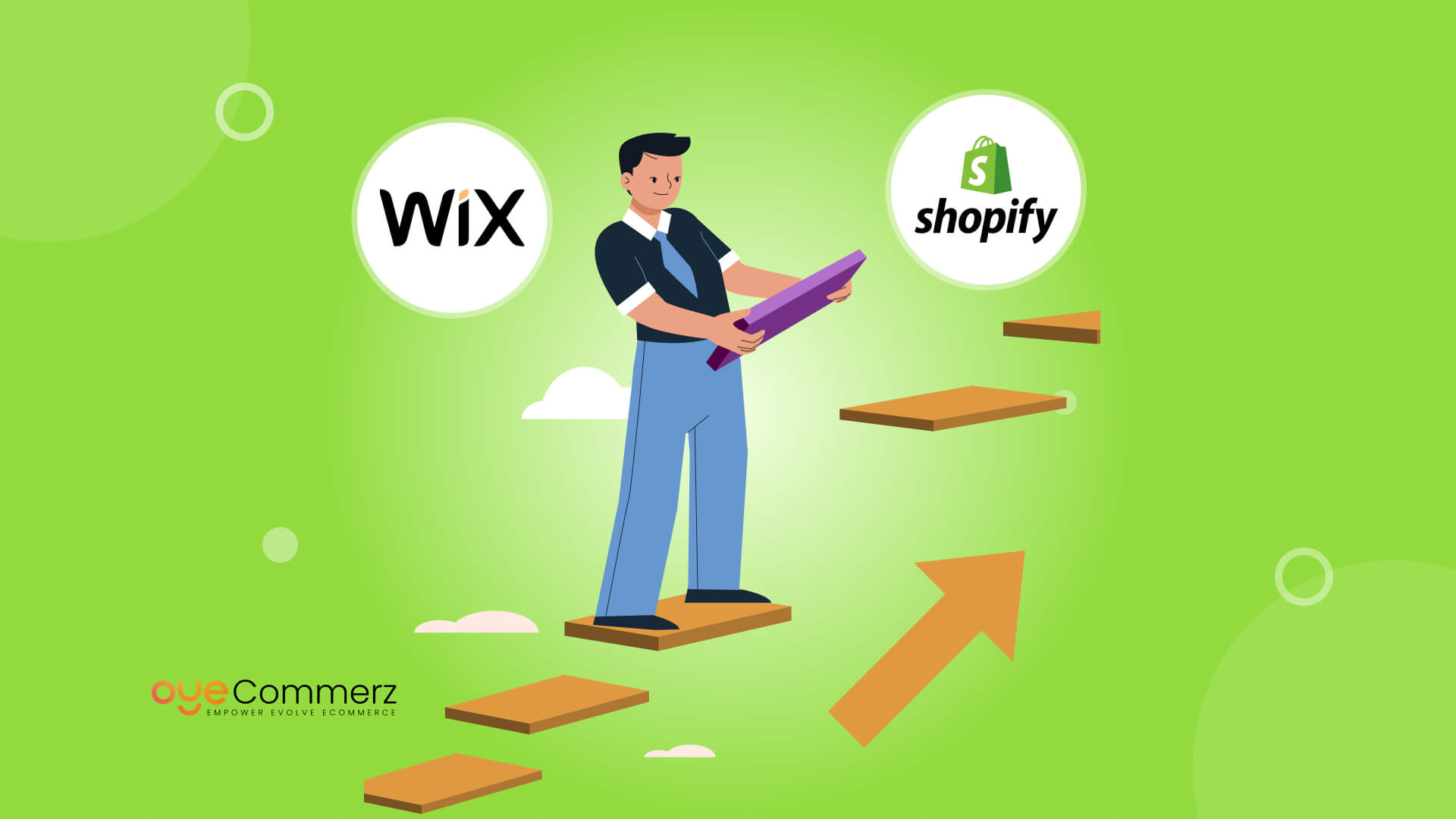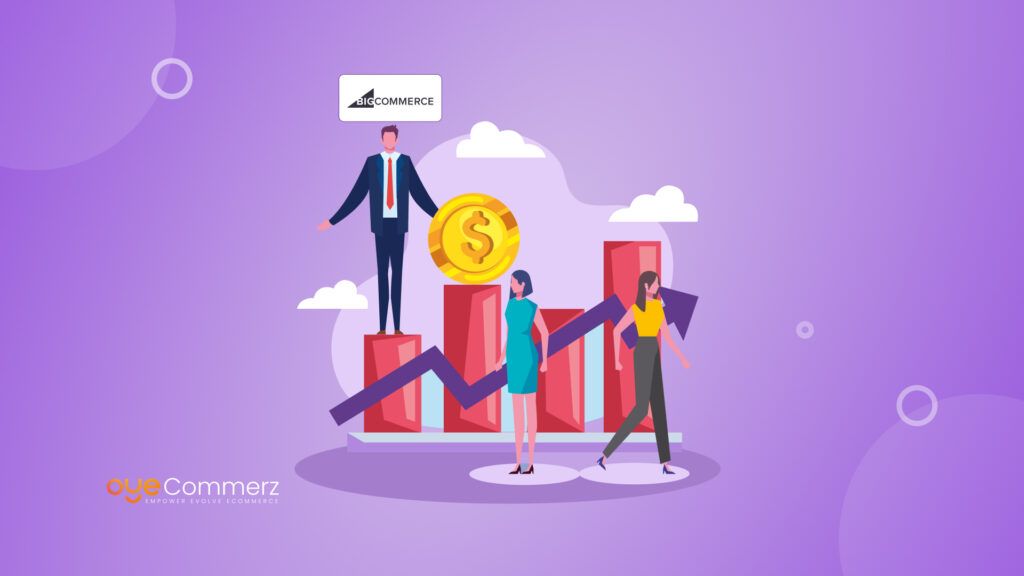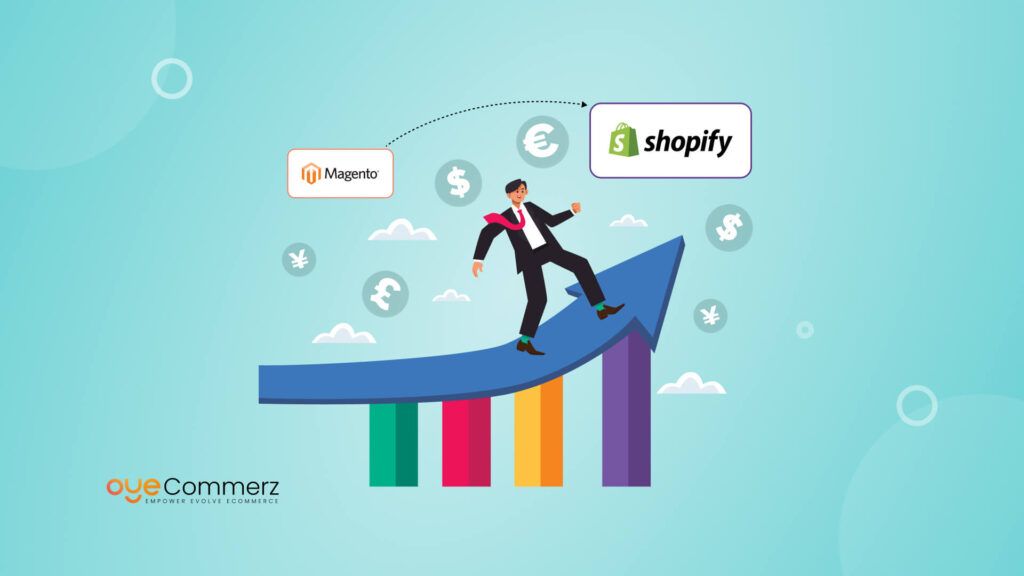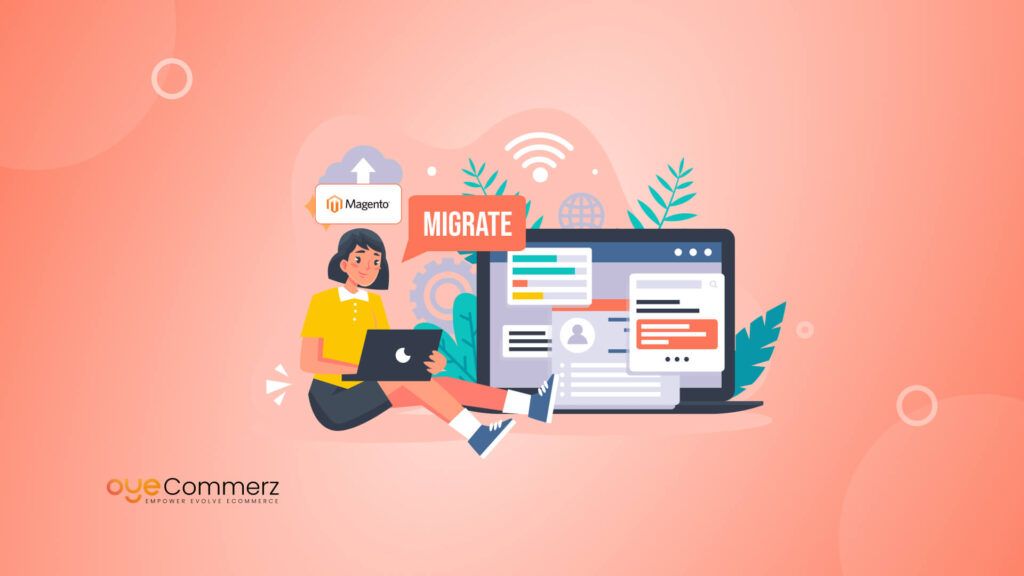Are you a new or existing business owner using wix wondering if it’s time to move from Wix to Shopify? If you’ve outgrown Wix and are ready to unlock the full potential of your e-commerce store, you’re not alone. According to eMarketer a market research company, the U.S. e-commerce market is expected to reach $1.3 trillion by 2025, and Shopify’s features and integrations provide an ideal framework for capturing this market. Many businesses are looking to scale in market, and Wix to Shopify migration is often the key to success. In this guide, you’ll discover how to smoothly transition your store in simple steps, ensuring a seamless migration while setting you up for enterprise-level e-commerce growth. Let’s see and make the process easy and efficient for you!
What is Migration?
Migration refers to the process of transferring your online store from one platform to another. Whether you’re moving from Squarespace, Magento, Wix or any other e-commerce solution to Shopify, it’s all about getting your store up and running seamlessly on a new platform that suits your business needs. Think of it like relocating your business to a better building with more space, better facilities, and the ability to grow.
During migration, everything important to your store—products, customer information, orders, and even design elements—needs to be transferred carefully. It’s not just about copying data; it’s about ensuring everything works perfectly, without losing any functionality or SEO rankings.
For today’s digital-savvy entrepreneurs, Shopify migration is a chance to upgrade your store’s capabilities, enhance user experience, and unlock new growth opportunities with modern tools and features. Let us handle the technical stuff, so you can focus on scaling your business.
Why Migrate from Wix to Shopify?
Limitations of Wix for Enterprise-Level Businesses
Wix is widely recognized as an easy-to-use platform for small businesses, offering drag-and-drop design and basic e-commerce functionalities. However, as your business expands, several limitations become evident:
- Scalability: Wix struggles to handle high-traffic or complex product inventories.
- Customizability: For larger enterprises, Wix lacks the depth of customization needed to fine-tune unique e-commerce experiences.
- Limited Integrations: Wix doesn’t offer the same variety or depth of integrations that Shopify does.
Shopify: A Superior E-commerce Solution for Growth
For companies focused on e-commerce growth, Shopify is purpose-built for large-scale operations. Shopify Plus, in particular, offers:
- Unlimited Scalability: Handle thousands of transactions per minute without performance issues.
- Multi-channel Selling: Integrate your e-commerce operations across multiple channels, including Amazon, Facebook, and Instagram.
- Custom Workflows: Shopify Flow enables businesses to automate processes like inventory management, customer segmentation, and order tracking.
Industry Expert Quote
“Shopify’s infrastructure is designed for growth. Large enterprises need a platform that can scale seamlessly with their business, and Shopify Plus provides that scalability.” – Jake Turner, Senior Analyst at eCommerce Strategy Insights.
Step-by-Step Process to Move from Wix to Shopify
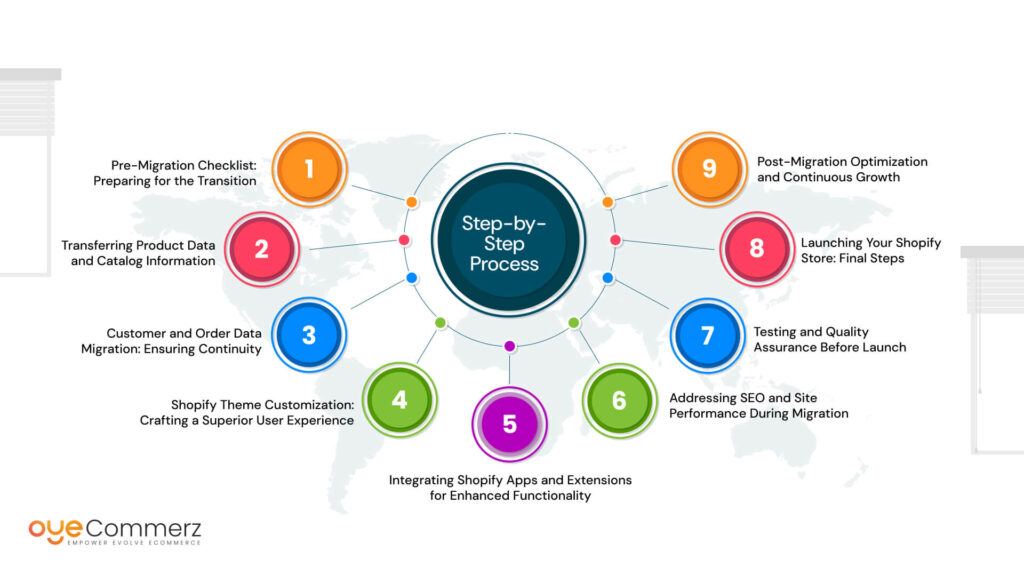
In this comprehensive guide, we’ll outline the critical steps for migrating from Wix to Shopify, offering insights on best practices, potential challenges, and key benefits. Whether you’re a CEO, CTO, or a key decision-maker in your organization, this guide will provide the knowledge necessary for a successful migration.
Pre-Migration Checklist: Preparing for the Transition
Data Audit and Assessment
Before starting your migration, conduct a thorough review of your Wix data by concentrating on the following areas:
- Product Listings: Review product descriptions, images, variants, and categories.
- Customer Information: Clean up your customer data, including profiles, purchase history, and contact details.
- Order History: Make sure all orders and transaction data is correct and updated.
SEO Evaluation
Maintaining SEO rankings during a migration is critical for avoiding traffic loss. Perform a comprehensive SEO audit of your Wix site, focusing on the following elements:
- URLs and Redirection: Add 301 redirect from old Wix URL to the new Shopify URL.
- Metadata: Make sure that all meta titles, descriptions, and alt tags are imported.
- Backlink Analysis: Map out and preserve valuable backlinks, ensuring they continue to point to the appropriate pages after migration.
Migration Planning with Experts
Partnering with experienced Shopify developers like Oyecommerz will ensure that your migration plan covers all critical areas, including data migration, SEO preservation, and platform customization.
Transferring Product Data and Catalog Information
Importance of Data Accuracy
During the migration, it’s vital to maintain the accuracy of your product data. Inaccurate product listings can lead to dissatisfied customers, inventory issues, and loss of trust. Categories related to data about products to focus on includes:
- Product Descriptions: Ensure each product description transfers accurately, with special attention to SEO optimization.
- Images and Media: Check that high-quality images, videos, and any associated media are migrated without loss in quality.
- Variants and Customizations: Products with multiple sizes, colors, or other variants need to be migrated with all details intact.
Migration Tools and Automation
Several tools are available to streamline the migration of product data. Shopify’s own migration tools or third-party apps like Cart2Cart offer automated solutions that minimize manual work. However, having a specialized Shopify migration partner can ensure additional customizations and integrations are handled seamlessly.
Customer and Order Data Migration: Ensuring Continuity
Customer Data: Profiles, Purchase History, and Communication Preferences
When migrating from Wix to Shopify, your customer data is one of the most critical assets. The customer experience is directly attached to the availability and accuracy of this data. Key areas to consider include:
- Customer Profiles: Ensure customer details like names, addresses, and loyalty points are migrated.
- Purchase History: Customers expect to see their past orders and transaction history when they log in. Failing to migrate this can erode trust.
- Communication Preferences: Keep your email marketing segments and preferences intact to avoid disrupting your marketing campaigns.
Migrating Order Histories
Order data, including transaction records, fulfillment statuses, and payment details, must be preserved during migration. Make sure to test the accuracy of this data post-migration by running simulated transactions.
Shopify Theme Customization: Crafting a Superior User Experience
Recreating Your Store’s Design on Shopify
Migrating to Shopify presents a valuable opportunity to reimagine your design strategy and enhance the user experience. While you could replicate your Wix store’s layout, it’s worth considering an upgrade to enhance user experience (UX) and optimize for conversions. Important considerations include:
- Mobile-First Design: With mobile e-commerce sales expected to make up 72.9% of all e-commerce by 2025, a responsive, mobile-optimized design is crucial.
- Optimized Navigation: A clean and intuitive site structure can drastically improve the user journey and reduce cart abandonment rates.
- Advanced Features: Use Shopify’s Liquid templating language to add advanced customizations like personalized product recommendations.
Integrating Shopify Apps and Extensions for Enhanced Functionality
Key Shopify App Integrations
A key strength of Shopify is its vast app ecosystem, featuring over 6,000 apps designed to boost store functionality and streamline various business processes.
- Inventory Management: Tools like TradeGecko or Skubana offer advanced inventory tracking and automatic reorder features.
- Marketing and CRM: Apps like Klaviyo and HubSpot integrate directly with Shopify for email marketing, customer segmentation, and CRM automation.
- Shipping Solutions: Shopify integrates with leading shipping carriers, including UPS, FedEx, and DHL, to streamline fulfillment.
Custom Integrations and API Development
For businesses with unique needs, Shopify’s open API allows for extensive custom integrations. Whether you need to connect internal systems, custom CRMs, or third-party logistics providers, Shopify provides the flexibility to build a tailored solution.
Addressing SEO and Site Performance During Migration
Preserving SEO Authority
Losing SEO traffic during migration is a common concern, but careful planning can mitigate this risk. Key steps include:
- 301 Redirects: Set up proper 301 redirects for all URLs to preserve SEO authority.
- Canonical Tags: Use canonical tags to prevent duplicate content issues and maintain SEO integrity.
- XML Sitemap: Submit an updated XML sitemap to Google once the migration is complete to ensure your new URLs are indexed quickly.
Site Speed and Performance Optimization
Site speed is a ranking factor for Google and impacts user experience. Ensure that your Shopify site is optimized by:
- Image Compression: Compress large media files without sacrificing quality.
- CDN Integration: Shopify uses a built-in CDN, but you can enhance performance by utilizing additional caching strategies.
- Code Optimization: Minimize CSS, HTML, and JavaScript files for faster load times.
Testing and Quality Assurance Before Launch
Functional Testing
Before you launch your Shopify store, run comprehensive tests to ensure everything works as expected. Focus on:
- Navigation Testing: Ensure all links and menus function correctly.
- Checkout Process: Test the entire checkout flow, including adding products, applying discounts, and completing payments.
- Mobile Responsiveness: Ensure that your site performs flawlessly on smartphones and tablets.
Load Testing for High-Traffic Durability
For enterprise businesses, ensuring that your site can handle peak traffic is crucial. Shopify Plus offers robust server infrastructure, but you should still run load tests to ensure your site doesn’t slow down or crash under heavy usage.
Launching Your Shopify Store: Final Steps
Marketing and Communication Strategy
Launch day should be supported by a strong marketing strategy. Announce your migration via:
- Email Campaigns: Notify your customers about the benefits of the new platform.
- Social Media Announcements: Promote special launch offers or new features on all social channels.
- Paid Advertising: Run targeted ads on Google, Facebook, and Instagram to attract traffic to your new Shopify store.
Post-Launch Monitoring
After launch, continuously monitor your site’s performance to identify any potential issues. Leverage tools like Google Analytics and Shopify’s built-in reporting features to monitor.
- Traffic Sources
- Bounce Rates
- Conversion Rates
Post-Migration Optimization and Continuous Growth
Continuous Testing and Improvement
Once your Shopify store is live, optimization should be an ongoing process. Run A/B tests on:
- Checkout Flows: Test different layouts and steps to reduce cart abandonment.
- Product Pages: Experiment with different layouts, descriptions, and images to increase conversions.
Leveraging Shopify Plus Features
As your business grows, you can leverage Shopify Plus’s advanced features like:
- Shopify Flow: Automate routine tasks such as order fulfillment and inventory management to improve efficiency.
- Script Editor: Customize your checkout experience with personalized discounts or unique pricing for specific customer segments.
Advanced Reporting: Shopify’s powerful analytics and reporting tools offer in-depth insights into sales trends, customer behavior, and marketing
Are you ready to migrate from Wix to Shopify?
Oyecommerz, a Shopify development agency, specializes in seamless migrations for enterprise-level e-commerce businesses. Our expert team at Oyecommerz will manage every aspect of your migration, from data transfer to custom Shopify solutions, ensuring a seamless transition that’s fully optimized for growth.
Contact us today for a consultation and take the first step towards upgrading your e-commerce success!
Contact to Migrate your Site to Shopify Now
Conclusion
Migrating from Wix to Shopify is a significant step for enterprise-level e-commerce businesses looking to scale and unlock new growth opportunities. Shopify’s unmatched scalability, customization options, and integration ecosystem make it the ideal platform for businesses focused on sustained e-commerce growth. By following the steps outlined in this guide, you can ensure a smooth, successful migration that preserves SEO, optimizes user experience, and enhances operational efficiency.

